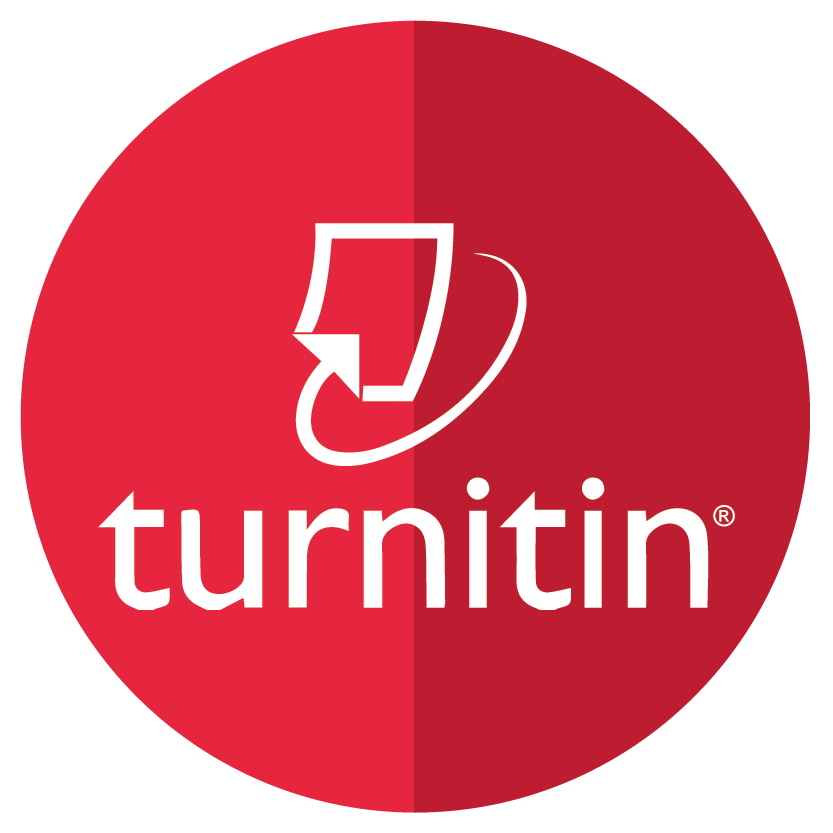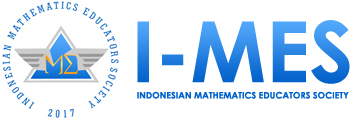ANALYSIS OF STUDENTS' DIFFICULTIES IN SOLVING PROPORTIONAL COMPARISON PROBLEMS
Abstract
This study aims to analyze the difficulties students face in solving problems related to proportional comparison. This study employs a case study method based on the errors made by students in solving problems related to proportional comparison. Four students were selected as a theoretical sample from a group of 34 seventh-grade students at the junior high school in Tasikmalaya. These students were chosen due to their complex levels of errors, which included procedural errors, incomplete solutions, and mistakes in determining mathematical formulas. The results of the study indicate that students experience difficulties in solving proportional comparison problems, including: (1) difficulty in understanding mathematical language, (2) difficulty in understanding word problems, (3) the influence of mathematics anxiety, and (4) differences in learning styles. Interviews and classroom observations revealed that factors such as less varied teaching methods, a lack of contextual practice, and low learning motivation contribute to the difficulties experienced by students. The discussion of the research results emphasizes the importance of more interactive and contextual teaching approaches to enhance students' understanding of the concept of proportional comparison. The implications of this study highlight the need for the development of more innovative teaching materials and the use of educational technology to help students overcome these difficulties.
Full Text:
PDFReferences
Abulhul, Z. (2021). Teaching Strategies for Enhancing Student’s Learning. Journal of Practical Studies in Education, 2(3), 1–4. https://doi.org/10.46809/jpse.v2i3.22
Alam, B. P., Lutvaidah, U., & Santosa, P. P. P. (2020). Students’ Error Analysis in Completing English Math Story Problems. Proceedings of the 1st International Conference on Folklore, Language, Education and Exhibition (ICOFLEX 2019), 370–374. https://doi.org/10.2991/assehr.k.201230.069
Ali, S., Ali, I., & Hussain, S. (2021). Difficulties in the Applications of Tenses Faced by ESL Learners. Research Journal of Social Sciences and Economics Review (RJSSER), 2(1), 428–435. https://doi.org/10.36902/rjsser-vol2-iss1-2021(428-435)
Andrade, E. A. de O., Silva, I. P. da, & Pina, M. O. M. (2023). Digital Technologies In Mathematics Education. Journal of Interdisciplinary Debates, 4(01), 97–122. https://doi.org/10.51249/jid.v4i01.1255
Azhar, E., Saputra, Y., & Nuriadin, I. (2021). Eksplorasi Kemampuan Pemecahan Masalah Matematis Siswa Pada Materi Perbandingan Berdasarkan Kemampuan Matematika. AKSIOMA: Jurnal Program Studi Pendidikan Matematika, 10(4), 2129. https://doi.org/10.24127/ajpm.v10i4.3767
Burr, S. M. D. L., Xu, C., Li, H., Si, J., LeFevre, J., & Wang, Y. (2022). Fraction mapping and fraction comparison skills among grade 4 Chinese students: An error analysis. British Journal of Educational Psychology, 92(4), 1335–1353. https://doi.org/10.1111/bjep.12503
Cañizares, D. C., Poblete, R. K., & Pérez, N. E. (2022). Contribution of Attentional Networks to Basic Arithmetic Achievement in School-age Children. Psicología Educativa, 28(2), 127–134. https://doi.org/10.5093/psed2021a20
Castillo, S., & Fernández, C. (2022). Secondary School Students’ Performances on Ratio Comparison Problems. Acta Scientiae, 24(6), 60–88. https://doi.org/10.17648/acta.scientiae.6834
Davis, E. (2022). The ratios debate. Early Years Educator, 23(12), 18–19. https://doi.org/10.12968/eyed.2022.23.12.18
Fitriani, Umar, K., Pasaribu, F., Novitasari, W., Sofyan Samosir, B., & . Y. (2023). Analysis of Difficulty Understanding Student Mathematica by Using Online Learning Model. KnE Social Sciences, 180–188. https://doi.org/10.18502/kss.v8i4.12898
Fitriyani, D., Hutapea, N. M., & Syofni, S. (2023). Pengembangan Lkpd Materi Perbandingan Berbasis Rme Untuk Memfasilitasi Kemampuan Pemahaman Matematis Peserta Didik. AKSIOMA: Jurnal Program Studi Pendidikan Matematika, 12(1), 994. https://doi.org/10.24127/ajpm.v12i1.6471
Gijsbers, D., de Putter-Smits, L., & Pepin, B. (2020). Changing students’ beliefs about the relevance of mathematics in an advanced secondary mathematics class. International Journal of Mathematical Education in Science and Technology, 51(1), 87–102. https://doi.org/10.1080/0020739X.2019.1682698
Herman, T., Rahmi, K., & Utami, N. S. (2022). Student learning obstacles in solving contextual mathematical problems. AIP Conference Proceedings, 2659(1), 040001. https://doi.org/10.1063/5.0113653
Hidayat, E. I. F., Vivi Yandhari, I. A., & Alamsyah, T. P. (2020). Efektivitas Pendekatan Realistic Mathematics Education (RME) Untuk Meningkatkan Kemampuan Pemahaman Konsep Matematika Siswa Kelas V. Jurnal Ilmiah Sekolah Dasar, 4(1), 106. https://doi.org/10.23887/jisd.v4i1.21103
Hussein, Y. F., & Csíkos, C. (2023). The effect of teaching conceptual knowledge on students’ achievement, anxiety about, and attitude toward mathematics. Eurasia Journal of Mathematics, Science and Technology Education, 19(2), 1–25. https://doi.org/10.29333/ejmste/12938
Klados, M. A., Paraskevopoulos, E., Pandria, N., & Bamidis, P. D. (2019). The Impact of Math Anxiety on Working Memory: A Cortical Activations and Cortical Functional Connectivity EEG Study. IEEE Access, 7, 15027–15039. https://doi.org/10.1109/ACCESS.2019.2892808
Misra, P. K. (2021). Technology and Teaching. In Learning and Teaching for Teachers (pp. 181–198). Springer Singapore. https://doi.org/10.1007/978-981-16-3077-4_11
Munasinghe, B., Bell, T., & Robins, A. (2021). Teachers’ understanding of technical terms in a Computational Thinking curriculum. Proceedings of the 23rd Australasian Computing Education Conference, 106–114. https://doi.org/10.1145/3441636.3442311
Ningrum, D. P. N., Usodo, B., & Subanti, S. (2022). Students’ mathematical conceptual understanding: What happens to proficient students? AIP Conference Proceedings, 2566(1), 020017. https://doi.org/10.1063/5.0116651
Nogues, C. P., & Dorneles, B. V. (2022). Cognitive skills as predictors of elementary students’ understanding of arithmetic concepts. Ciência & Educação (Bauru), 28, e22037. https://doi.org/10.1590/1516-731320220037
Pascual, E. A. (2022). Getting the Answer Exactly Right: Dealing with Math Misconception. International Journal of Research Publications, 93(1), 306–310. https://doi.org/10.47119/IJRP100931120222745
Permatasari, S. A., & Prasetyawati, W. (2023). Efforts to Overcome Adolescent Academic Anxiety through Intervention Programs with a Cognitive-Behavioral Therapy Approach. Bisma The Journal of Counseling, 7(1), 130–137. https://doi.org/10.23887/bisma.v7i1.58382
Ramadianti, W., Priatna, N., & Kusnadi, K. (2019). Misconception Analysis of Junior High School Student in Interpreting Fraction. Journal for the Education of Gifted Young Scientists, 7(4), 1159–1173. https://doi.org/10.17478/jegys.631567
Rauf, D. M. Bin, & Malik, H. (2022). A Critical Analysis of the Role of Teachers in Providing Professional Guidance to Students in Government Secondary Schools. Propel Journal of Academic Research, 1(2), 14–25. https://doi.org/10.55464/pjar.v1i2.16
Riaddin, D. (2022). The Effect of Learning Videos on Students’ Mathematical Abilities: A Meta-Analysis Study. Eduma : Mathematics Education Learning and Teaching, 11(2), 223. https://doi.org/10.24235/eduma.v11i2.11463
Roulston, S., Cowan, P., Brown, M., Austin, R., & O’Hara, J. (2019). All aboard or still at check-in? Teacher educators’ use of digital technologies: Lessons from a small island. Education and Information Technologies, 24(6), 3785–3802. https://doi.org/10.1007/s10639-019-09951-x
Skulmowski, A. (2023). Do concreteness fading and guidance fading aid learning from perceptually rich visualizations? Changes in style lead to more cognitive load and interfere with learning. Current Research in Behavioral Sciences, 4, 100112. https://doi.org/https://doi.org/10.1016/j.crbeha.2023.100112
Tazkiya, F. (2023). The Importance Of Mastering Mathematical Concepts In Solving Mathematical Problems In Elementary Schools. EZRA SCIENCE BULLETIN, 1(1), 11–17. https://doi.org/10.58526/ez-sci-bin.v1i1.3
Zeljić, M., Dabić-Boričić, M., & Ilić, S. (2023). Second-graders’ understanding of comparison tasks. Inovacije u Nastavi, 36(1), 117–132. https://doi.org/10.5937/inovacije2301117Z
Zubaidi, A. M., & Velusamy, S. (2024). The Necessity of Educational Technology in Teaching Methods. In Encyclopedia of Information Science and Technology, Sixth Edition (pp. 1–12). IGI Global. https://doi.org/10.4018/978-1-6684-7366-5.ch033
DOI: https://doi.org/10.37058/jarme.v6i2.11498
Refbacks
- There are currently no refbacks.

This work is licensed under a Creative Commons Attribution-ShareAlike 4.0 International License.
Jurnal Penelitian Otentik Pendidikan Matematika (JARME)
Program Studi Pendidikan Matematika Universitas Siliwangi
Jl. Siliwangi no. 24 Kota Tasikmalaya - 46115
email: jarme@unsil.ac.id
e-ISSN: 2655-7762
Dilisensikan di bawah Lisensi Creative Commons Attribution 4.0 International
StatCounter: Detail
Diindeks oleh :


.jpg)
.jpg)



